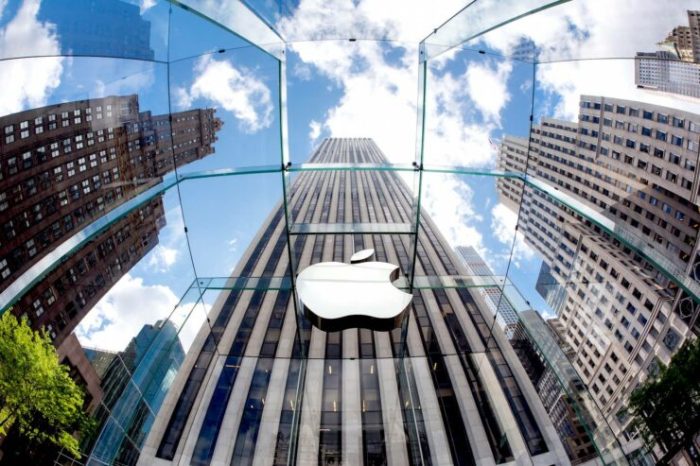iPhone X Component Demand Trends
The iPhone X, released in 2017, was a groundbreaking smartphone that introduced a number of innovative features, including a bezel-less display, Face ID, and a dual-lens camera system. This led to a significant increase in demand for key components, such as OLED displays, processors, and memory. However, the demand for these components has not always been consistent, experiencing fluctuations influenced by various factors.
Historical Demand Trends for Key Components
The demand for key components in the iPhone X has been subject to fluctuations, influenced by various factors. Let’s explore the historical trends for each component:
- OLED Displays: The iPhone X’s introduction of an edge-to-edge OLED display sparked a surge in demand for this technology. Samsung, the primary supplier of OLED displays for Apple, saw a significant increase in production to meet the demand. However, production limitations and challenges in achieving high yields initially resulted in limited supply and higher prices. As production ramped up, the supply stabilized, and prices gradually decreased.
- Processors: Apple’s A11 Bionic chip, a custom-designed processor for the iPhone X, saw a considerable increase in demand. TSMC, the manufacturer of Apple’s processors, had to increase production capacity to meet the high demand. The demand for the A11 Bionic chip was driven by the iPhone X’s powerful features, such as the Face ID system and the augmented reality capabilities. As Apple released subsequent iPhone models with even more powerful processors, the demand for the A11 Bionic chip stabilized.
- Memory: The iPhone X featured large amounts of RAM and storage, leading to a high demand for memory chips. Samsung and SK Hynix, key suppliers of memory chips for Apple, saw a surge in demand for their products. The demand for memory chips was also driven by the increasing popularity of smartphones with advanced features, such as high-resolution displays and powerful processors.
Factors Influencing Demand Fluctuations
Several factors have influenced the demand fluctuations for iPhone X components:
- Product Launches: The initial launch of the iPhone X generated a massive demand for its components, as consumers rushed to get their hands on the latest Apple device. This demand subsided after the initial hype, but it saw a resurgence during the holiday season, leading to further fluctuations in component demand.
- Market Competition: The iPhone X faced competition from other high-end smartphones, such as the Samsung Galaxy S9 and the Google Pixel 2. This competition influenced component demand, as consumers had more options to choose from. If a competitor launched a device with similar features at a lower price, it could potentially reduce demand for the iPhone X and its components.
- Economic Conditions: Economic factors such as global trade tensions, currency fluctuations, and consumer spending patterns can impact component demand. For example, a recession could lead to a decrease in consumer spending on luxury items, such as high-end smartphones, which would affect the demand for iPhone X components.
Factors Influencing Component Demand
The demand for components used in the iPhone X, like any electronic device, is influenced by a complex interplay of factors. These factors encompass technological advancements, consumer preferences, and the dynamics of the supply chain. Understanding these factors is crucial for analyzing the trends in component demand and predicting future market behavior.
Technological Advancements
Technological advancements play a significant role in shaping the demand for components. The introduction of new features, improved performance, and enhanced user experience often drive consumers to upgrade their devices, thus increasing the demand for components.
The iPhone X, with its innovative features like Face ID and the OLED display, spurred demand for components like facial recognition sensors and high-resolution displays.
The constant evolution of technology also necessitates the development of new components. As devices become more sophisticated, the demand for advanced components, such as processors, memory, and batteries, rises.
The introduction of the A11 Bionic chip in the iPhone X fueled the demand for advanced chipsets with higher processing power and efficiency.
Furthermore, technological advancements can also influence the availability and pricing of components. The development of new manufacturing processes and materials can lead to cost reductions and increased production efficiency.
The transition from LCD to OLED displays in the iPhone X created a surge in demand for OLED panels, leading to price fluctuations and supply chain challenges.
Consumer Preferences and Buying Habits
Consumer preferences and buying habits are crucial determinants of component demand. Consumers’ choices are influenced by factors such as brand loyalty, price sensitivity, and the perceived value of features.
The iPhone brand enjoys a strong following, leading to consistent demand for its components.
Consumer trends, such as the growing popularity of premium smartphones with advanced features, also influence component demand.
The iPhone X, with its high price tag and premium features, appealed to a segment of consumers willing to pay for a high-end experience, thus impacting the demand for its components.
The frequency of device upgrades is another significant factor. Consumers who upgrade their devices more frequently contribute to higher demand for components.
The introduction of new iPhone models each year, with features and designs that differ from previous models, incentivizes consumers to upgrade, leading to a cyclical pattern of component demand.
Supply Chain Disruptions and Manufacturing Challenges
The global nature of the electronics industry makes it vulnerable to supply chain disruptions and manufacturing challenges. These disruptions can impact component availability, pricing, and overall production.
The COVID-19 pandemic disrupted global supply chains, leading to shortages of components and increased production costs.
Natural disasters, political instability, and trade disputes can also disrupt supply chains, affecting component availability and pricing.
The trade war between the US and China, which involved tariffs on electronic components, created uncertainty and volatility in the supply chain, impacting component pricing and availability.
Manufacturing challenges, such as labor shortages, production delays, and quality control issues, can also impact component availability and pricing.
The complexity of manufacturing advanced components, such as OLED displays and processors, can lead to production bottlenecks and delays, affecting component availability and pricing.
Competitive Landscape and Market Dynamics: Iphone X Component Demand Weak
The iPhone X’s component demand was influenced by the competitive landscape within the smartphone industry, particularly from other flagship devices released around the same time. Understanding the market dynamics and emerging technologies impacting component demand provides valuable insights into the evolution of the smartphone market.
Competition from Other Flagship Smartphones
The iPhone X faced stiff competition from other flagship smartphones released around the same time, such as the Samsung Galaxy S9 and Google Pixel 2. These devices offered comparable features and specifications, including OLED displays, dual cameras, and powerful processors.
- The Samsung Galaxy S9, released in March 2018, offered a similar OLED display, dual camera system, and a powerful processor. The Galaxy S9’s popularity, particularly in markets like South Korea and Europe, put pressure on Apple’s component demand.
- The Google Pixel 2, released in October 2017, was known for its excellent camera performance and software experience. The Pixel 2’s success in the US market challenged Apple’s dominance in the premium smartphone segment.
Market Dynamics in the Smartphone Industry, Iphone x component demand weak
The smartphone industry is characterized by rapid innovation and intense competition. Key factors influencing component demand include:
- Technology Advancements: The constant development of new technologies, such as foldable displays, 5G connectivity, and advanced camera systems, drives demand for new components. Companies like Samsung and Huawei are aggressively investing in these technologies, creating a competitive landscape that influences component demand for all players.
- Consumer Preferences: Consumer preferences for features like display size, camera quality, and battery life play a significant role in determining component demand. Manufacturers are constantly trying to meet these evolving preferences, leading to changes in component requirements.
- Pricing Strategies: Pricing strategies employed by smartphone manufacturers influence component demand. Competitive pricing and promotions can stimulate demand for specific components, while premium pricing can limit demand for high-end components.
Impact of Emerging Technologies
Emerging technologies like foldable displays and 5G connectivity are expected to have a significant impact on component demand in the smartphone industry.
- Foldable Displays: Foldable displays require new and specialized components, such as flexible OLED panels and hinges. Companies like Samsung and Huawei are leading the development of foldable devices, which is expected to create new demand for these components.
- 5G Connectivity: 5G networks offer significantly faster speeds and lower latency compared to previous generations. This technology will require new components, such as 5G modems and antennas, driving demand for these components in the smartphone industry.
Implications for Apple and its Suppliers
The weakening demand for iPhone X components has significant implications for both Apple and its suppliers. Apple’s financial performance and future product strategies could be impacted, while suppliers face challenges in managing inventory and production levels.
Financial Performance and Product Strategies
Weak iPhone X component demand could negatively affect Apple’s financial performance in several ways. Firstly, it could lead to lower revenue and profits as Apple sells fewer iPhone X units. Secondly, it could result in higher inventory levels, leading to write-offs and increased storage costs. Finally, it could force Apple to adjust its product strategy, potentially delaying or canceling future iPhone models.
Impact on Suppliers
Apple’s suppliers are also vulnerable to weak iPhone X component demand. They may experience reduced orders and lower revenue, forcing them to adjust production levels and manage inventory. This could lead to layoffs, reduced investment, and potentially even financial instability for some suppliers.
Strategies to Mitigate the Effects
Apple and its suppliers can implement several strategies to mitigate the effects of weak demand. Apple could consider:
- Reducing iPhone X production to align with demand.
- Offering price discounts or promotions to stimulate sales.
- Developing new products and services to diversify its revenue streams.
Suppliers could:
- Diversify their customer base to reduce reliance on Apple.
- Invest in automation and other technologies to improve efficiency and reduce costs.
- Develop new products and services to expand their offerings.
Future Outlook and Predictions
The future demand for iPhone X components will be influenced by a complex interplay of factors, including the product lifecycle, technological advancements, and market trends. While the iPhone X has reached its end of life, its components continue to be relevant for newer models and other devices. Understanding these factors is crucial for predicting the trajectory of component demand and for Apple and its suppliers to adapt accordingly.
Impact of Technological Advancements
Technological advancements are a significant driver of component demand, both positively and negatively. While new technologies can create demand for innovative components, they can also make existing components obsolete.
- For example, the adoption of 5G technology has increased demand for components such as high-speed modems and antennas, while the shift towards foldable displays has led to increased demand for flexible OLED panels.
- On the other hand, advancements in battery technology have reduced the need for larger batteries in smartphones, potentially impacting demand for certain battery components.
Apple and its suppliers must closely monitor these trends and invest in research and development to stay ahead of the curve.
Iphone x component demand weak – The declining demand for iPhone X components is a stark reminder that the smartphone market is constantly evolving. As consumers seek out newer, more innovative features, and competitors push the boundaries of what’s possible, Apple and its suppliers must adapt to stay ahead. This shift in demand highlights the need for agility, innovation, and a keen understanding of the market to navigate the ever-changing landscape of the tech world.
While the iPhone X’s component demand might be weak, Apple’s dedication to software innovation continues. The release of iOS 8.3 brought WiFi calling to Sprint iPhones, a feature that could potentially boost sales for older models, even as the X struggles to gain traction. This focus on software could be a key strategy for Apple as they navigate the challenging hardware market.
 Standi Techno News
Standi Techno News

